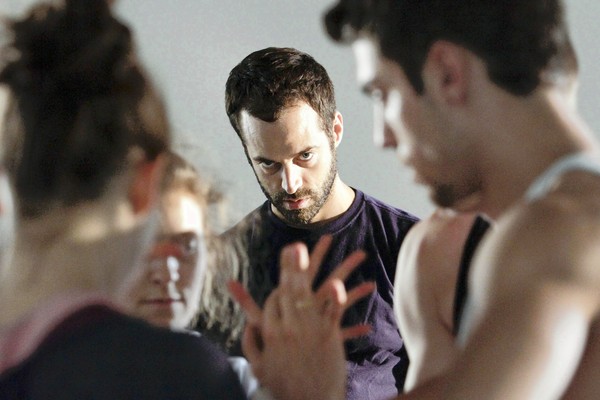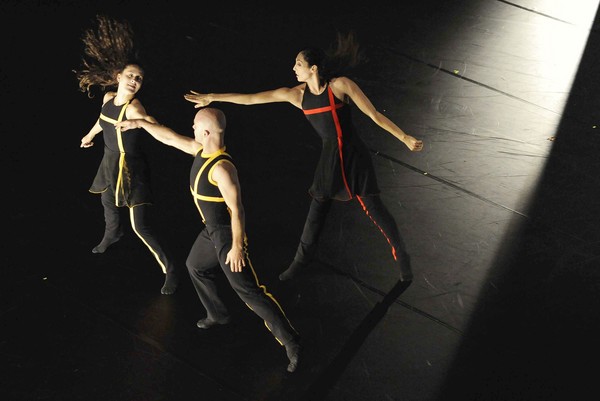The LA Dance Project Debut
Less than 24 hours before attending one of the premiere performances of the newly formed LA Dance Project, I was angry about it. Being a native Angeleno, I have heard time and again that we just don’t get the arts. We don’t appreciate it. We don’t cultivate it. And we can’t seem to generate excitement about it the way other prominent cities do.
But actually, they don’t get it. Anytime I’ve heard that kind of critique from non-Los-Angeles-natives, I kind of want to put them back on the train they rode in on. There happens to be an abundance of artistry here, but it’s different. You can’t package it up and present it the same way you do in New York, London, or Paris. This city is so vast. The artistry is sort of all over the place and you need to know how to see it. If you look for it from the same point of view as you do other cities you’re going to miss it. In other cities, you go to the art; in Los Angeles, art is imbedded in the community. So, I get angry when people move here and tell us how and where to appreciate art.
Then, in rides Benjamin Millepied to harness the LA dance company beast. He comes from Bordeaux by way of New York City where he was a principal with New York City Ballet. He’s also husband to Natalie Portman and is best known in this city, and most other cities, for his work in Darren Aronofsky’s 2010 film, Black Swan, in which he acted and choreographed.
Millepied is here to bring us the LA Dance Project, which he founded “to present works based on collaboration with artists from fields including art and music in nontraditional as well as conventional settings,” according to the LA Music Center program article written by someone called Libby Slate. The troupe, or “collective” as Millepied likes to call it, is small – just six dancers, plus Millepied. The general idea is to bring artists together and create theater, modern dance, and visual performances in a communal, somewhat Diaghilev manner. Despite my apprehensions, I felt this was a perfect approach to take in this city and I’ll admit I was intrigued.
What Millepied has, which most LA choreographers before him lacked, is the PR power that comes with a major Hollywood connection. There was more publicity, advertising, and buzz about this formal debut than any LA dance performance has ever received in my lifetime.
I drove over to the Walt Disney Concert Hall with my pre-emptive Angeleno dance defense mechanism in full oscillation and when I got inside, my worst suspicions seemed fully realized. Just beside the lobby, some of the troupe’s film works were being played and I felt like I was watching bad student films. The choreography seemed uninspired or, in some cases, nonexistent and while the production values looked high, it was clear that in no way was the dance or the film exploring any new territory. It seemed rather self-indulgent and, again, grandiose, as Millepied’s personal explanations about his choreography were voiced-over rehearsal footage. Wait a few more years before you start doing that, would you Ben? You’re not Jerome Robbins.
Upon entering the theater, I took my seat in the balcony. The nice thing about the Walt Disney Concert Hall is that even from the balcony you can get a stellar view of the stage. It’s not a venue normally used for dance, but in this case, I think the stage was incredibly apt for the program.
That program was a source of welcomed surprise. Thinking I was coming into a performance featuring only the work of Millepied, I was elated to see that prior to his piece we were being treated to William Forsythe’s Quintett and Merce Cunningham’s Winterbranch. It was these additions to the program that officially changed my angry suspicions about the LA Dance Project. Essentially, if they can shine their oversized spotlight on work like this and bring it to the audiences of Los Angeles, then I salute them in their cause. I have never seen either piece and it was a sheer joy to finally experience both. In fact, it was the first time I ever saw a Merce Cunningham piece performed live. As the show got underway, I was additionally pleased. What I experienced was a troupe of dancers, skilled and capable, performing three modern dance works.
The dancing in Quintett was by far the strongest of the performance. The fluidity of the choreography worked beautifully on dancer Frances Chiavernini, whose lines were simply stunning, and Charlie Hodges, who demonstrated near-perfect technique. That piece also remained my personal favorite, as I delighted in both the music, the emotion, and the gorgeous partnering work throughout. However, the exhaustion did begin to show on a few of the dancers as they neared the end of the 26-minute piece.
Winterbranch was awesome, although I overheard several of my fellow audience members complaining about the music, which is actually the sounds of ash trays scraping on mirrors and wooden sticks rubbing against a gong. The work explores the concept of falling and recovering. Maybe it was my high perch in the balcony, but I was rather fascinated by the shape of the dancers as they assembled on the floor – their bodies, heaped on the stage, began to take on a sort of inhuman shape under the dim, sometimes flashing, lights. Yes, it’s somewhat inaccessible, perhaps a little dated, but I really found it a fascinating, existential piece.
The performance concluded with Millepied’s own work. A 27-minute piece set to the exuberant music of Nico Muhly. This was the only music performed live and hearing the beautiful sounds of the concert hall’s gorgeous wood organ was a treat. The choreography was broken into 3 movements, with the third being by far the most engaging. It was here when Charlie Hodges’ brilliant technique and expressive presence really saved the piece. Through him, the piece had moments in which we caught glimpses of some character, a fragment of meaning. But beyond that most of the piece fell flat. Though the music was thrilling and the dancers were lovely, the choreography, while pretty, lacked purpose or anything to set it apart. Technically proficient, but emotionally vacant, Millepied’s piece doesn’t linger or provoke and after seeing the other two masterful works prior, it just didn’t stand up.
Furthermore, the piece incorporated three art installations by Christopher Wool that left something to be desired. The way they were used by the dancers was rather pointless. And the costumes designed by Rodarte were a further disappointment. Discount Dance Supply could have offered better. That design was perhaps the biggest disappointment of the day.
However, my final verdict on the LA Dance Project is that they have some excellent promise and deserve some attention. They may bring a lot of great work to this city, for which I would be incredibly grateful. But I also hope that they respect Los Angeles for what it has to offer. Because we may not be the city of lights or the city that never sleeps, but neither are we trying to be.
Image Sources: LA Times





